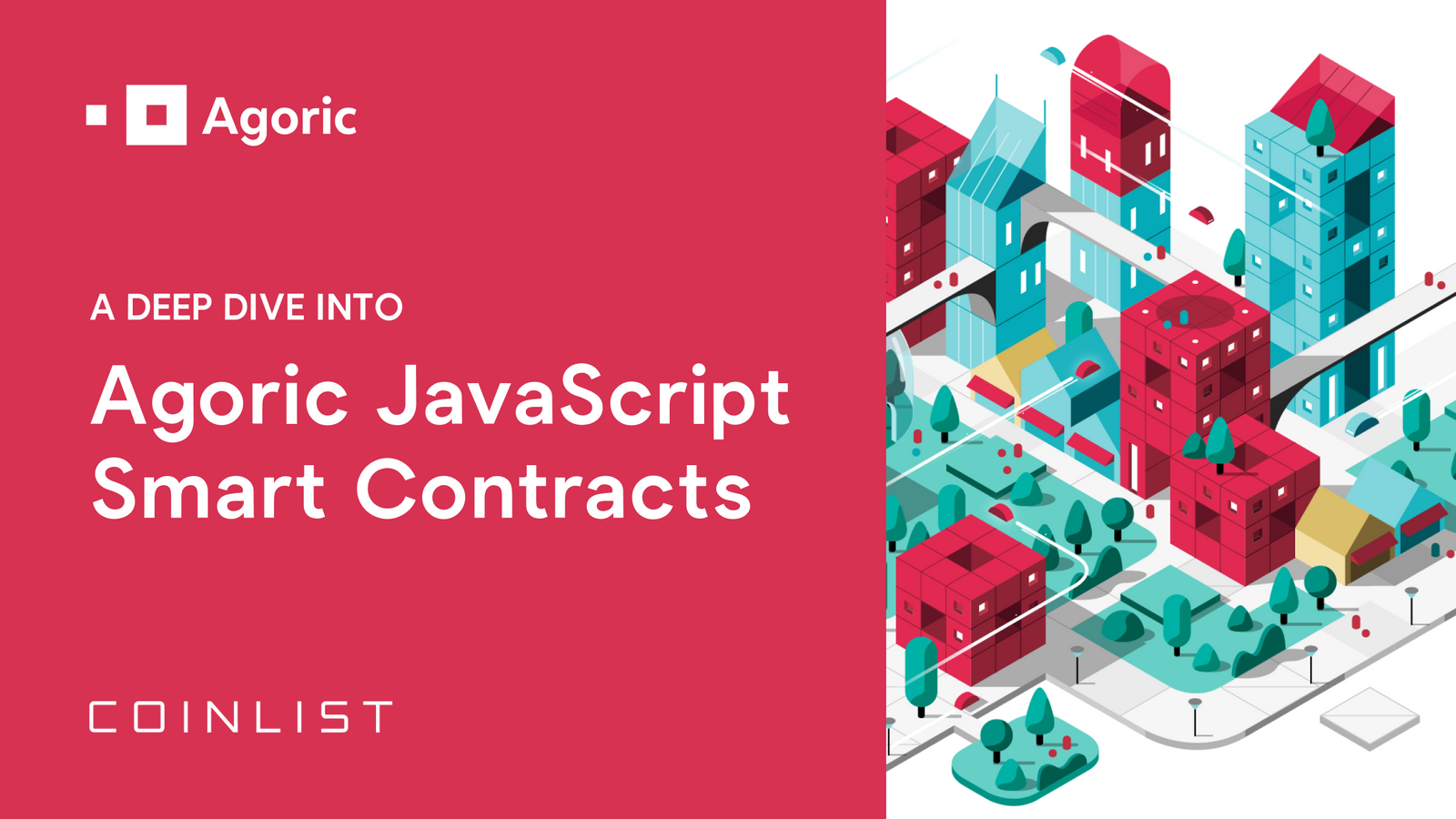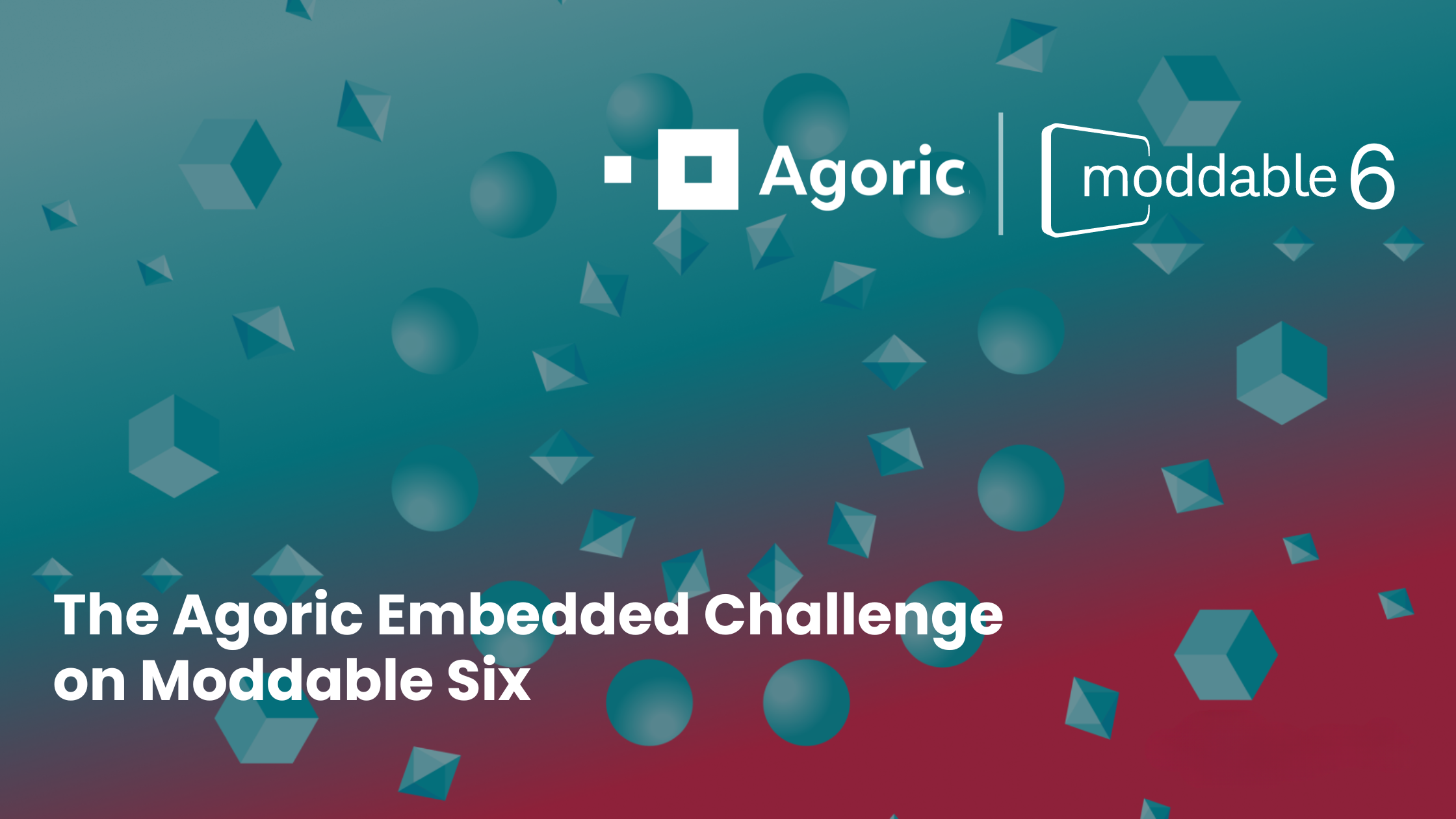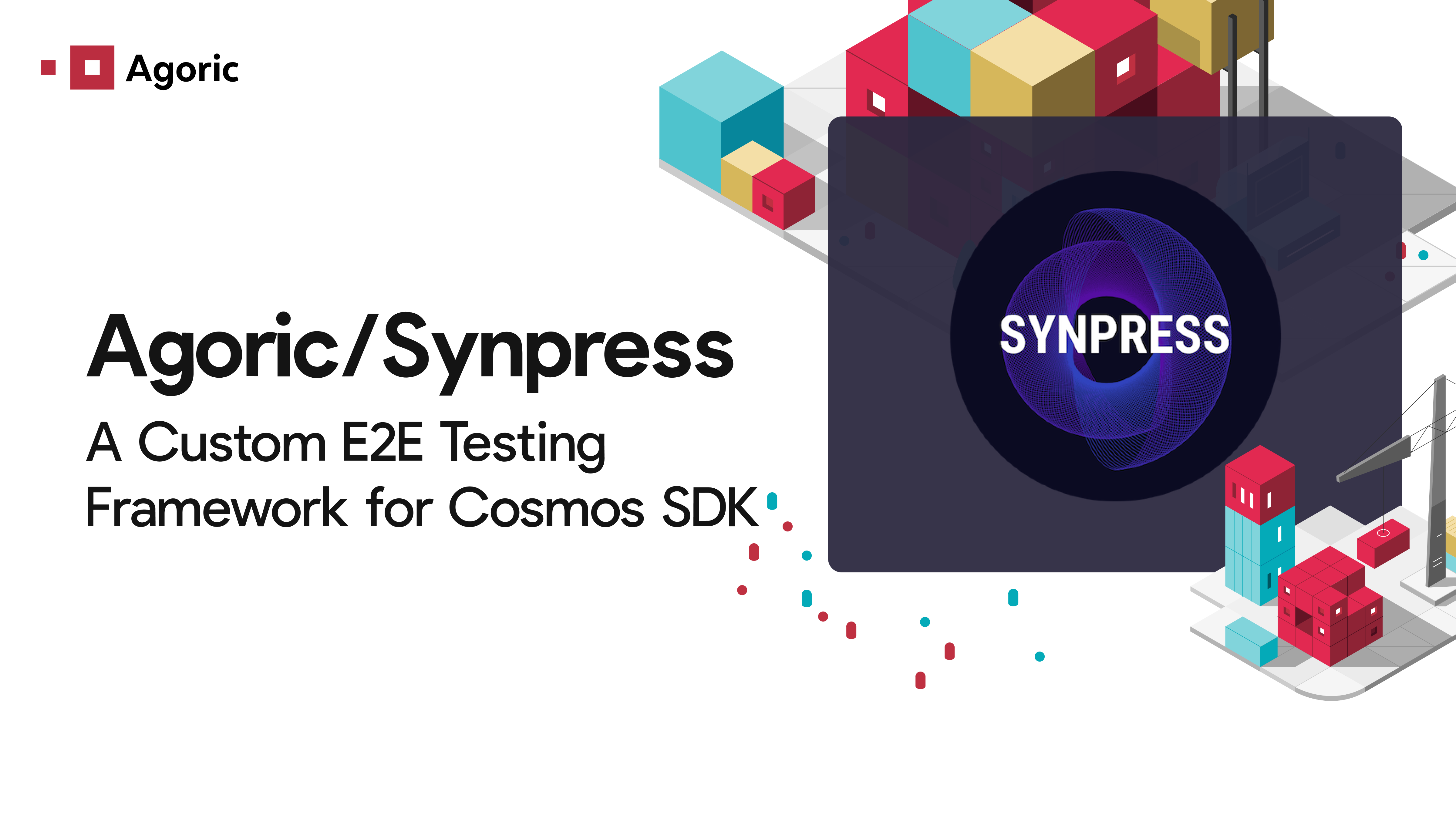Originally published on CoinList • Dec 28, 2021
Last week, we announced the Agoric Token Sale on CoinList, starting December 29, 18:00 UTC. Agoric is a proof-of-stake chain utilizing JavaScript smart contracts to rapidly build and deploy dapps. We sat down with several Agoric contributors to break down what they are building and how Agoric saves developers time and resources, and prevents re-entrancy attacks and other common smart contract bugs.
1. To begin, what is Agoric and how does it utilize JavaScript smart contracts for dapp development?
Agoric is a layer 1, proof-of-stake public blockchain designed to enable developers to rapidly build safe smart contracts in the most popular programming language on the planet, JavaScript.
The Agoric blockchain and crypto ecosystem is the smart contract platform that can quickly bring millions of developers to the DeFi frontier. Agoric’s hardened JavaScript makes blockchain programming accessible to the 10+ million JavaScript developers. Hardened JavaScript provides the safe, stable environment that developers need to build, deploy, and operate sophisticated Dapps, NFTs, and DeFi markets. The Agoric public blockchain, part of the Cosmos ecosystem, is built upon the battle-tested Tendermint Proof of Stake (PoS) consensus system with native IBC support. Moreover, the Agoric programming model, supported by our native market infrastructure, is designed to enable the formation of a cryptoeconomic standard library with the same exponential composability that led to the explosive growth of the Node.js, React.js, and other JavaScript ecosystems.
Beyond just the JavaScript programming language, the Agoric platform introduces Zoe, a “first of its kind” platform service that enables safe economic composition between smart contracts. Zoe brings to web3 developers on the Agoric platform the kind of modern, pluggable component framework that has dominated web2 development.
2. What are the Agoric tokens? What is the inherent value and use case for Agoric’s BLD token? What about the IST token?
The Agoric chain features two native tokens, BLD and IST. BLD, the foundational token being sold in this CoinList sale, is the native staking token of the Agoric blockchain. BLD secures the network and is used for governance. IST is a fee token used to pay for chain services (e.g., gas), implement smart contracts on-chain, and support cross-chain activity. IST will be created on-chain by smart contracts authorized by the BLD holders through governance. The BLD and IST tokens serve complementary purposes in order to prioritize network security and scale the ecosystem.
Chain Security:
BLD holders provide security to the chain through staking with validators. The Agoric blockchain is a proof-of-stake chain, operated by a network of validators that use the battle-tested Tendermint BFT consensus algorithm from Cosmos. Validators come from an open ecosystem of contributors and infrastructure providers. BLD stakers are rewarded in both BLD and IST tokens.
Protocol Governance:
BLD provides governance rights for the Agoric chain. BLD holders are the stewards of the chain moving forward; they sponsor and vote to approve new initiatives. Governance encompasses a variety of activities, including direct token votes on initiatives and the election of committees to manage critical infrastructure. We anticipate this governance functionality to extend to core economic primitives in the Agoric ecosystem like the IST system.
IST Protocol:
BLD creates the platform and foundation for the IST token. The IST token — not part of the Agoric Token Sale — is the fee token for the chain. It is envisioned as a stable token pegged to the value of the U.S. dollar (USD), built as a collection of smart contracts called the IST Protocol. As envisioned, IST is fully backed by user-provided collateral, which may include BLD, assets built on the Agoric chain, and assets from the $75B+ interchain ecosystem available via the Inter-Blockchain Communication protocol (IBC).
3. How do BLD holders earn staking rewards? Can you elaborate on how this is possible for locked BLD tokens?
BLD holders delegate their BLD tokens to validators to support network security, thereby earning rewards of both BLD and IST. The two sources of staking rewards are:
Issuance of new BLD tokens. Early in the chain’s life, new BLD tokens will be issued to provide rewards to stakers. The details of this issuance are subject to governance by the BLD holders, but the expected plan is to issue 250m additional BLD tokens spread out over three years. See CoinList deal page for details.
Inter Protocol fees. BLD stakers provide the security necessary for the Inter Protocol to exist, and therefore are rewarded for that service. Protocol fees paid in IST are distributed to BLD stakers. Protocol fees will include:
Fees from user vaults which create IST; and
Protocol fees from trades on the native Agoric automated market maker.
Both locked and unlocked BLD tokens can be staked with validators to help secure the chain. Locked tokens cannot be transferred, but they can be staked with validators to help secure the chain, and, like unlocked BLD, earn rewards. All staking rewards are unlocked, ensuring that there will be liquid tokens available to active network participants before the token unlocking events from BLD purchased in the sale.
4. What is the Inter Protocol and why is it so important for the Agoric ecosystem?
The Inter protocol implements the IST stable token. IST is the native fee token for the Agoric platforms and is poised to play a bigger role in the $75B+ interchain ecosystem.
The opportunity: the Inter Protocol as envisioned provides a stable token for the IBC ecosystem and wider interchain economy. The IST token is fully collateralized by the assets of the interchain system, and pegged to the U.S. dollar (USD) for broad accessibility.
The competition for a stable token in the interchain ecosystem is heating up; currently, the interchain ecosystem does not have a stable token backed by the broad spectrum of available assets such as ATOM, OSMO, SCRT, etc. The Agoric blockchain provides the ideal platform for building applications to support a healthy stable token in the interchain ecosystem and beyond.
The Inter Protocol consists of several economic primitives written in Agoric’s smart contract framework and tied integrally to chain functionality: the vault system and getIST, the automated market maker, and staking reward distribution. Let’s look at each section of the Inter Protocol in turn.
Vault System: Allows holders of crypto assets such as BLD, ATOM, OSMO, etc. to lock those assets in Vaults to create IST. The set of accepted assets is determined by Protocol Governance, as described above.
Automated Market Maker (AMM): The native Agoric AMM supports the Inter Protocol by ensuring there is sufficient market depth to liquidate user vaults. Beyond its role in the Inter Protocol, the native AMM will also support trading of assets launched on Agoric or brought to the Agoric chain via IBC.
getIST: BLD stakers may lock their already-staked BLD to create IST – similar to a Vault. This allows BLD stakers to participate in the ecosystem while still securing the chain.
Rewards & Reserve: Fees generated by the operation of the Inter Protocol flow to BLD stakers. A portion of the fees are held in reserve by the Inter Protocol. The reserve fund further protects the Inter Protocol from fluctuations in collateral value by covering shortfalls in Vault liquidation.
5. What is the Zoe smart contract framework? How does Zoe help developers build on Agoric?
The Zoe smart contract framework is the means through which Agoric provides security and composability to developers. For all its success in the past few years, blockchain development is still in its infancy. Contracts with simple business logic still require months or years of development time to ensure security, and still often fail.
Zoe supports developing smart contracts in a modern, pluggable component framework that has been the dominant paradigm for web 2 applications. The platform is designed to speed development and reduce the risks of using and building smart contracts.
A core differentiator between Zoe and other smart contract platforms is offer-safety, which ensures that all on-chain transactions either settle and close, or return to users what they offered in the proposed transaction. In blockchains like Ethereum, users get no such protection: a user gives tokens directly to a smart contract like UniSwap as part of a request; if the contract fails due to bugs, malicious code, etc. the user has no recourse to get their provided assets back. By contrast, with Zoe on Agoric, a user makes such a swap request in the form of an offer — “I will give you X tokens if and only if you give me Y tokens”, and provides the X tokens to the Zoe smart contract infrastructure, not the contract itself. The contract is then notified of the offered swap, and will only receive the X tokens if it provides the Y tokens that the user wants to the infrastructure. The infrastructure itself ensures that the user gets what they want, or their provided assets back. Offer-safety is the pervasive transaction model in Agoric and allows both developers and users to avoid catastrophic errors that are frequent in other systems.
The Zoe smart contract framework also includes the Electronic Rights Transfer Protocol (ERTP), which is Agoric’s token standard for creating and transferring tokens and other digital assets. The growing library of components uniformly supports diverse types of digital assets and contracts, including fungible tokens, NFTs, and remote assets from other chains.
6. How does Agoric promote cross-chain activity and what opportunities does this provide both developers and users of the Agoric ecosystem?
The Cosmos IBC protocol is an implementation of Agoric’s original ideas for inter-operating smart contracts, adapted to the specific needs of Tendermint and the Cosmos SDK. The Agoric team was deeply involved in the development of protocol in collaboration with teams including Informal, the Interchain Foundation, and Tendermint Inc.
The Agoric platform is unique in that it was built from the start to enable applications to span multiple blockchains. This makes the Agoric platform the ideal place to build IBC native applications.
Agoric will launch with IBC enabled and integrated into the platform. Agoric chain assets such as BLD and IST will be available on IBC applications, including Osmosis DEX, Evmos, and other IBC-enabled environments. Cosmos users will be able to use IBC assets like LUNA, ATOM, and OSMO within the Agoric platform. Bridge assets from other L1s (layer 1 chains) may also be usable within the platform as the IBC network effect intensifies.
With the smooth integration of IBC, other chains and their assets just look like more smart contract legos for JavaScript developers to build with!
7. What’s the plan for Network Decentralization and Foundation tokens?
Agoric is a big project with many important elements. Major allocations of BLD tokens are reserved for various supporting purposes or for entities with long-term alignment to incentivize the growth of the Agoric platform. In most — but not all — cases, this will result in locked-up tokens. Until the BLD tokens are actually locked-up, they are classified as “potentially circulating”.
Network Decentralization Fund: The purpose of the Network Decentralization fund is to expand the decentralization of the system by staking BLD with a broad range of validators, crafting liquidity mining, and incentivizing developers of early components. Most of such allocations will be locked up for a 2-4 years, just like all currently disseminated BLD tokens. For example, incentivized testnet rewards were allocated from the Network Decentralization fund with a 2 year lockup (as reflected in the Token Circulation chart on the CoinList deal page). However, if some of those funds are allocated in the future to an on-chain DAO, that DAO could potentially make them liquid. Because BLD tokens in the Network Decentralization fund are not already locked up, they are classified as “circulating” at the moment, even though there are no plans to put them in circulation before Public Sale tokens unlock.
Foundation: A Foundation is being formed, which once formed, will be governed by a diverse set of Agoric stakeholders to advance the interests of decentralized technology built on or using the Agoric blockchain and related technologies. The Foundation may, at its discretion, choose to lock up some proportion of its BLD tokens. As with the Network Decentralization fund, Foundation tokens are categorized as “circulating” at the moment, even though there are no plans to put them in circulation before Public Sale tokens unlock.
8. What crypto trends are you most excited about for the beginning of 2022?
The crypto ecosystem saw incredible growth in 2021, and we think there are a few catalysts coming for 2022 which will continue that growth.
Increasing demand for decentralized stablecoins:
The demand for stablecoins increased dramatically during 2021. This is a critical inflection point because a stable medium of exchange reduces economic friction and thereby accelerates economic growth. The Agoric platform envisioned IST for precisely this purpose: to make it easier to build, deploy, and grow new kinds of economic applications and services. The interchain ecosystem is ripe for further growth in this area.
Rapid expansion of IBC and interoperating L1:
A year ago, interoperability was a novel idea for the distant future. Today, with the advent of ‘layer 2’ chains like Polygon, major interchain bridges like Wormhole and Gravity Bridge, and the growing adoption of the market-leading IBC protocol, interoperability has become a reality. At present, multiple chains are competing to provide greater, better, and cheaper interoperability. As IBC activity continues to ramp up, and more projects – including Agoric – come to Mainnet, users will begin to see a vibrant alternative to EVM-based crypto activity. Upcoming releases such as Interchain Accounts and Interchain Staking will likely drive new cross-chain functionality that hasn’t been seen before.
Entrance of Mainstream Developers:
While developer growth in crypto has been strong, the community of smart contract developers is still small relative to the global developer pool. As more options for developers open up, we believe there will be an explosion of activity. Agoric is uniquely positioned to reach the largest pool of developers in the world — JavaScript developers — and enable the expansion necessary for the next wave of decentralized applications.
Financial Services Integrations:
Mainstream financial institutions have largely been locked out of participating in decentralized finance innovations for compliance reasons. In 2022, we expect to see regulated smart contract insurance come to market-driven in part by Agoric — which will allow these institutions to participate. New capital will mean new opportunities for builders and more mainstream applications leveraging the innovations in this space.
9. What is the best way for the community to get involved with Agoric?
Agoric offers several ways for the community to get involved. Take a look below at the options and choose your path! Looking to contribute something different? Shoot a message on Discord: https://agoric.com/discord
Developers:
Agoric invites DeFi entrepreneurs, the JavaScript community, and native crypto developers to build a number of important pieces of infrastructure using Agoric components. See available bounties here.
Validators:
Looking to set up a validator and secure the Agoric chain? Look no further! Head to https://github.com/Agoric/agoric-sdk/wiki/Validator-Guide
Writers & Content:
Agoric is always looking for quality content on topics related to the Agoric ecosystem. If that’s your type of jam, Agoric would love to hear from you. Some things of particular interest: tutorials, thought pieces, build-alongs, and industry insights. Drop a message in the #contribute channel on our Discord at https://agoric.com/discord
Rock some merch:
Maybe you’re looking to show your support with some slick merch. Visit the Agoric shop at https://agoric.com/shop



